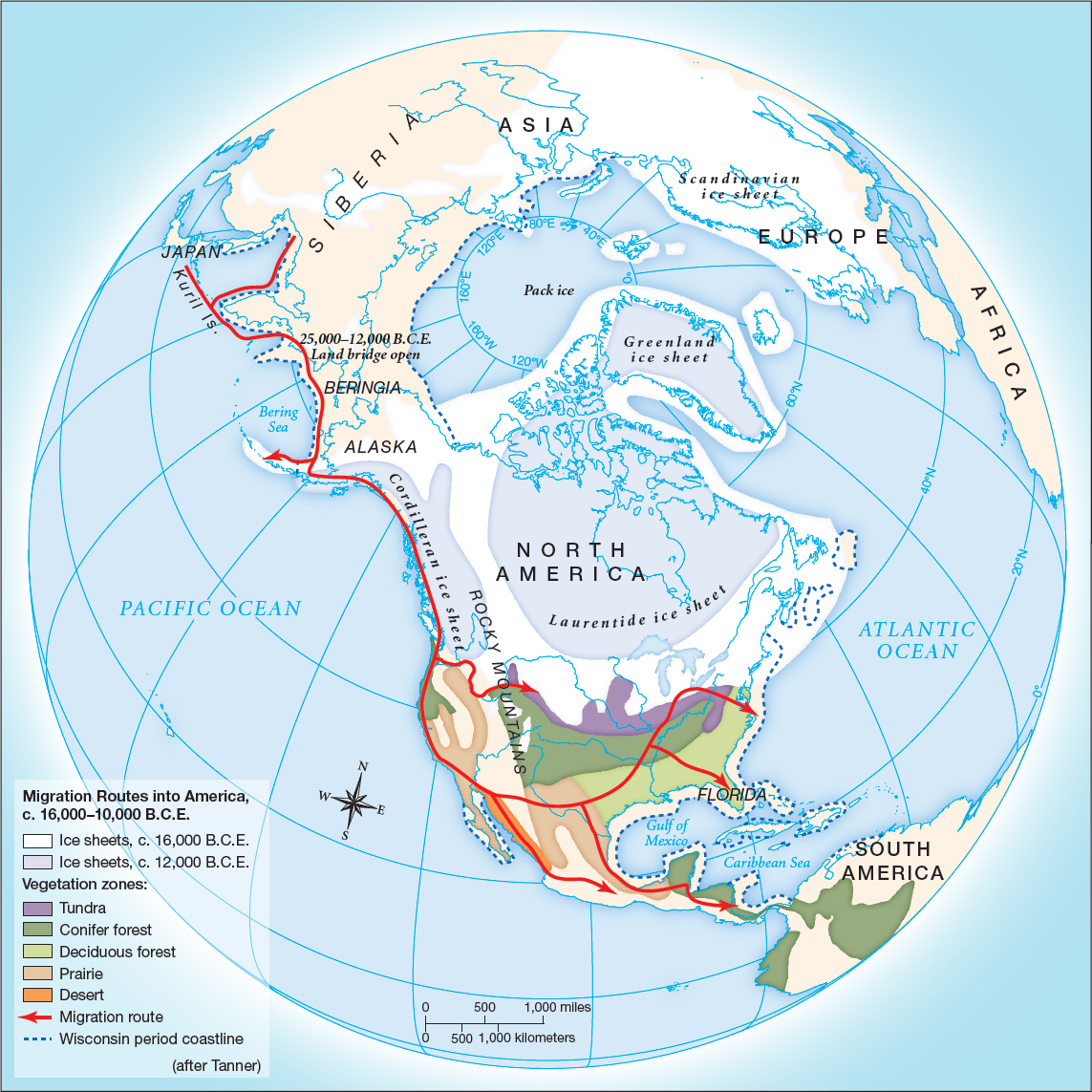Native Peoples Develop Diverse Cultures
Much of what we know as the Americas was probably first settled by peoples from northeast Asia. Between about 16,000 and 14,000 B.C.E., the growth of glaciers during the Wisconsin period led to a dramatic drop in sea levels and created a land bridge in the Bering Straits, between present-day Siberia and Alaska. Early settlers probably traveled over this bridge, known as Beringia, following herds of mammoths, musk oxen, and woolly rhinoceroses.
While most of these groups settled along the coast or gradually pushed inland, others probably used boats, hugging the shore and landing at various points along the Pacific coastline. Whether on foot or by boat, most groups traveled southward, skirting melting glaciers and seeking better hunting grounds and more abundant plant life. The mammoths and other large game disappeared about 10,000 years ago, and many groups then depended on smaller game, fish, roots, berries, and other plant foods to survive. At the same time, migrations continued across the Bering Straits, with Inuit and Aleut peoples arriving in present-day Alaska about 5,000 years ago (Map 1.1).

About 3,000 years ago, some communities in the Americas began establishing agricultural systems that encouraged more stable settlements, population growth, and the accumulation of possessions. In the Americas, horticulture—a form of agriculture in which people work small plots of land with simple tools—first developed in present-day Mexico. There men and women developed strains of maize (or Indian corn) with larger kernels and higher yields than those that grew in the wild. They also cultivated beans, squash, tomatoes, potatoes, and manioc (a root vegetable), providing rich sources of protein. The combination of beans, squash, and corn offered an especially nutritious diet while maintaining the fertility of the soil. Moreover, high yields produced surplus food that could be stored or traded to neighboring communities.
By 500 C.E., complex societies, rooted in intensive agriculture, began to thrive in the equatorial region. Between 500 and 1500 C.E., thousands of separate societies and cultures speaking hundreds of distinct languages developed in the Americas. Small bands of hunters and gatherers continued to thrive in deserts and forests while impressive civilizations marked by gigantic stone statuary, complex irrigation systems, and ornate gold and silver ornaments arose on swamplands and in the mountains.